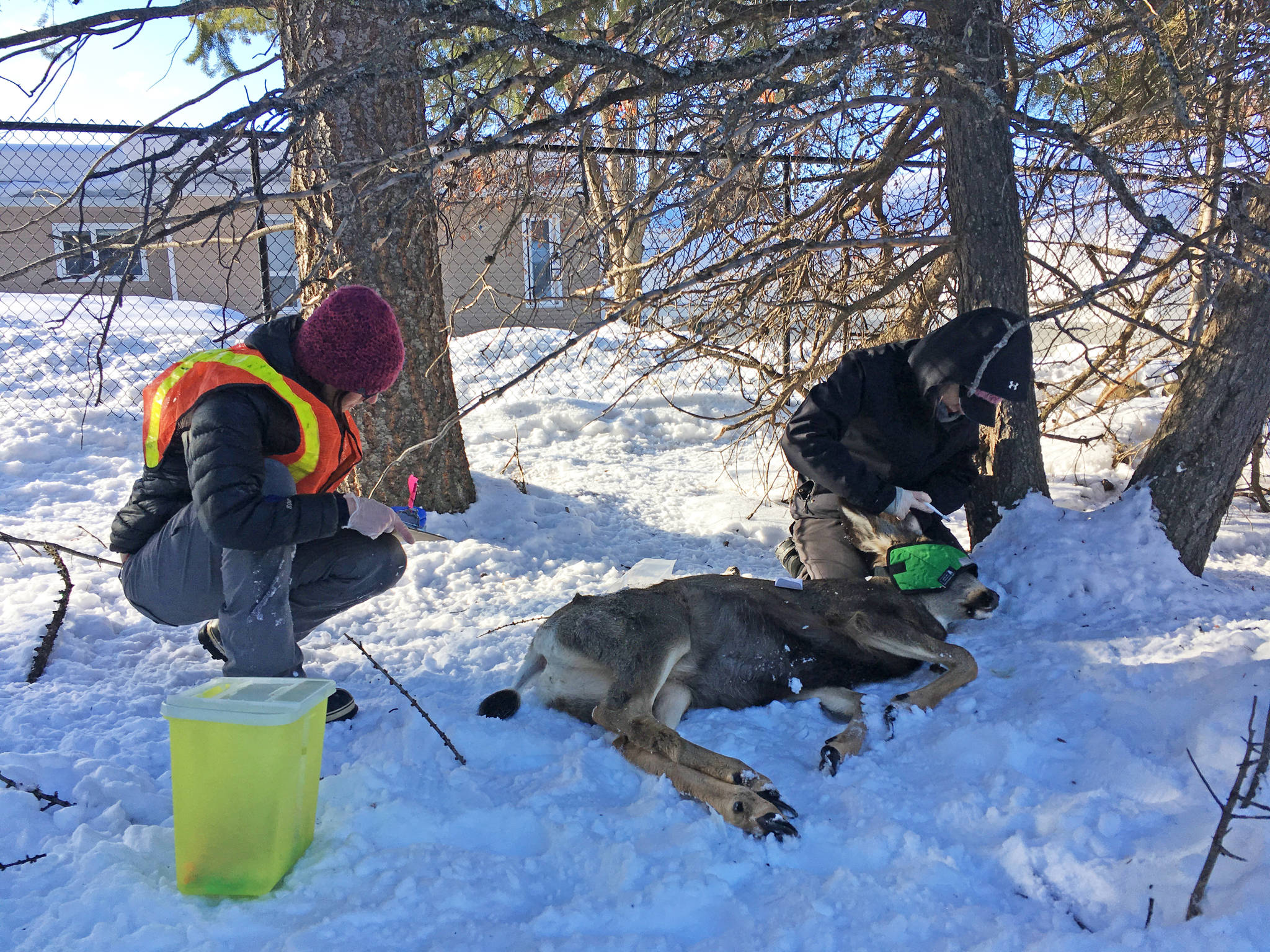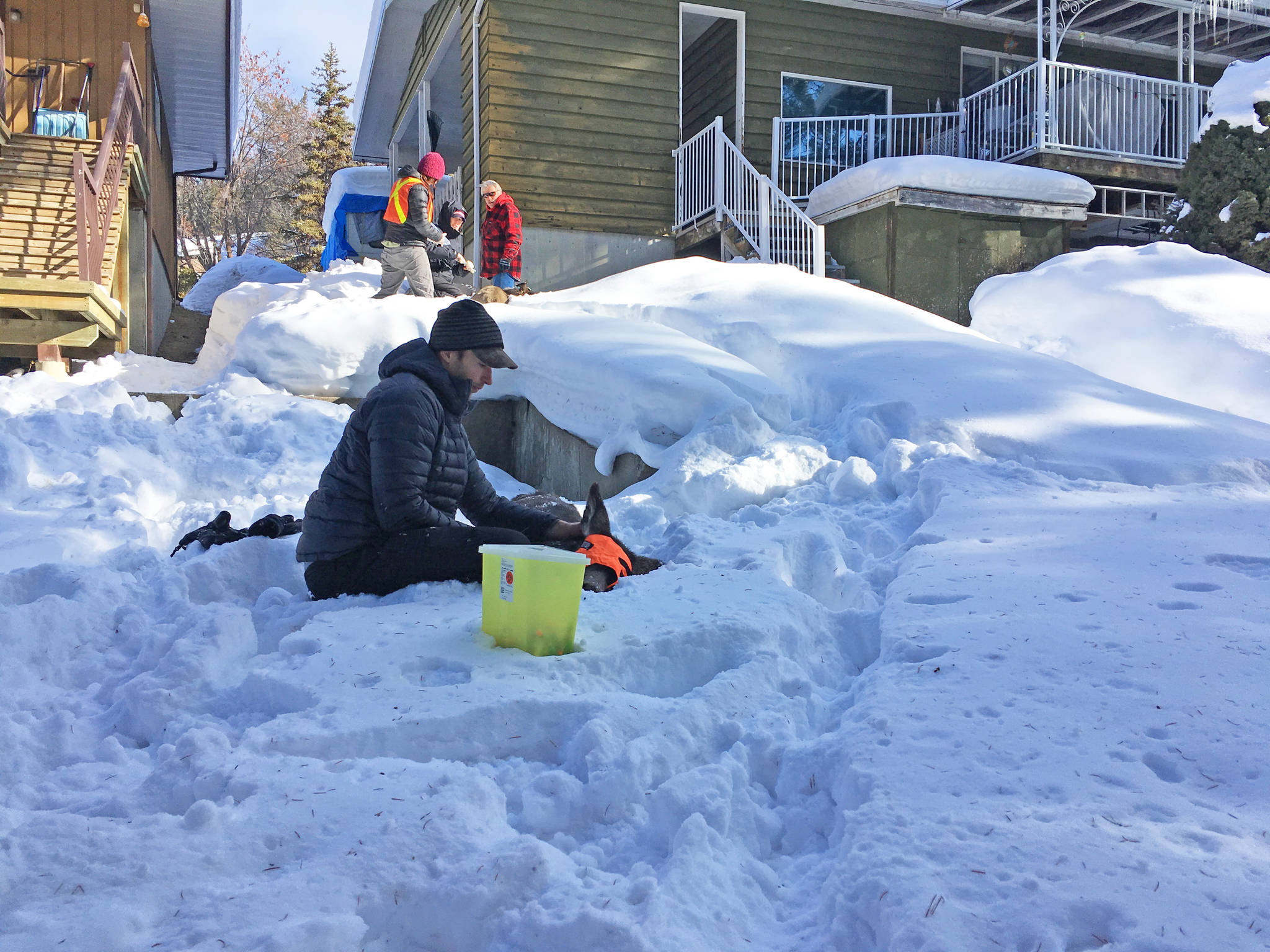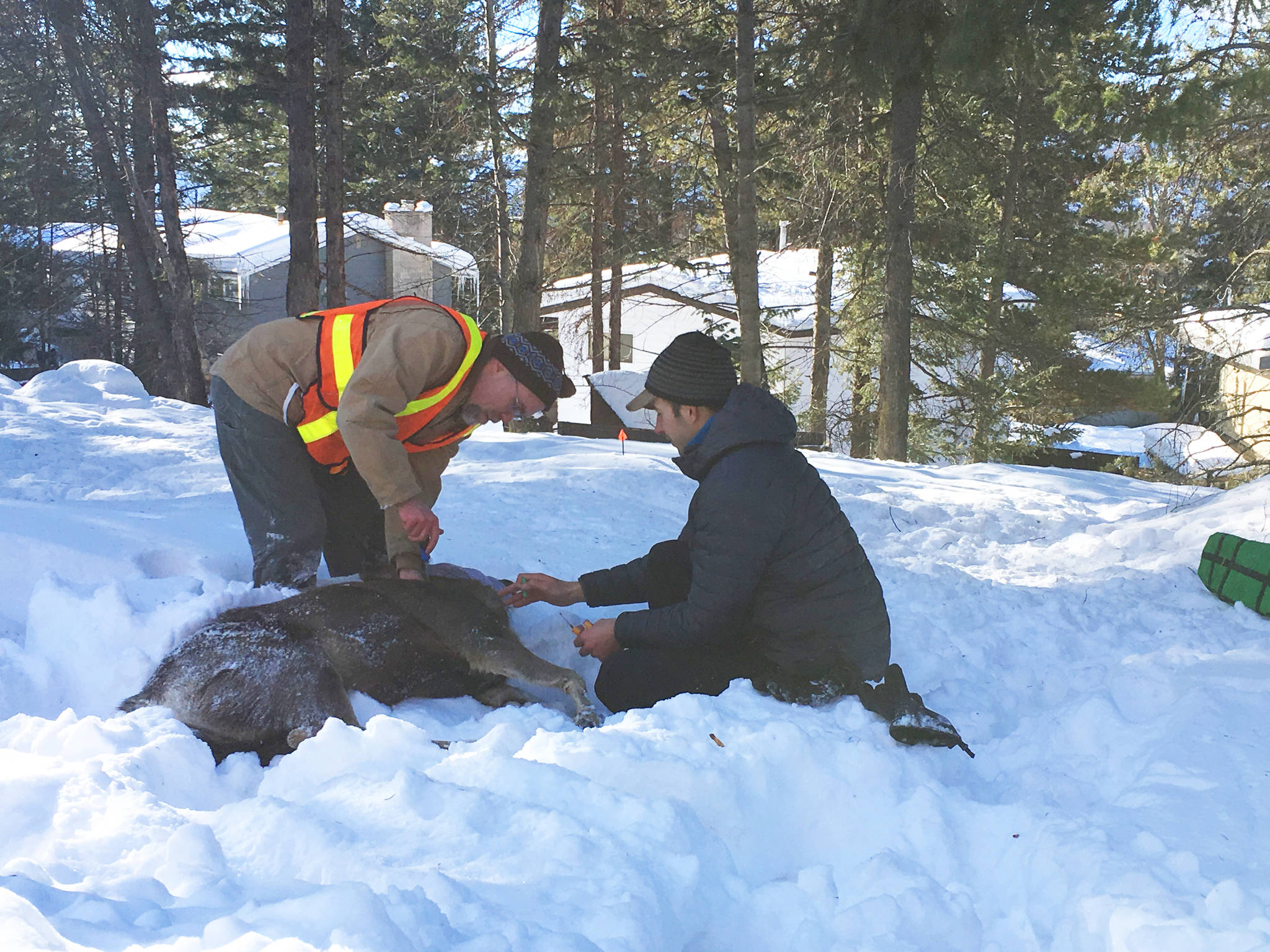A team of Wildlife Biologists, Veterinarians and Staff from Vast Resources are making their way through Kimberley neighbourhoods this week, to locate 50 mule deer and relocate them to a remote location north of the Kootenay River and Canal Flats.
Last year the City of Kimberley tried to get an operational translocation permit, however the BC Ministry of Forests, Lands, and Natural Resource Operations (FLNRO) stated that several more years of research is required before translocation can be considered operational. The city was able to get a permit to continue translocation as a research project.
According to the Managing for the Future Document from the Kimberley Urban Deer Advisory Committee, if the urban deer population is not reduced within Kimberley in some way, the risk of aggressive behaviour towards humans or pets is increased, specifically any number over 125. According to preliminary count data, the deer population increased from 147 in 2016 to 154 in 2017.
Read More: Animal Alliance stepping up campaign for non-lethal methods of dealing with deer.
On Wednesday, March 7, 2018, the Bulletin took part in the sedation and relocation of eight mule deer.
Wildlife Biologist Ian Adams has been on site overseeing the translocation. So far Adams and the team have moved 10 deer per day, the total being close to 30 deer translocated as of Wednesday afternoon.
Adams and the rest of the team start their day by scouting out deer for potential relocation. Adams says that some of the challenges they face include being in the right place at the right time, and ensuring the safety of both the community and the animals.
“It’s a bit challenging because we have to be able to capture the deer at the right spot and at the right time,” said Adams. “It’s all about public safety and the deer’s safety. For example, we don’t want to administer the drug to the deer if they are right beside a roadway, as this could pose a risk for both the deer and traffic in the area.”
Permission is also required from homeowners in order for the team to be able to access deer on private property.
A horse trailer is parked in a calm and quiet location, in the shade, to ensure the deer are not overheating or spooked once they arrive to the trailer.
Adams says it is preferable to find a family of deer (doe and fawns) and that the team “feels good” when they can translocate a family together.
On Wednesday, the team located a family of eight deer in Champman Camp and waited until an opportune time and location to administer the tranquilizer, which takes about ten minutes to kick in.
Once the deer are fully sedated and lying down, the team gets to work taking samples, checking for ticks, tagging the deer, and moving them to the trailer. Once all of the deer have been processed and moved to the trailer, they are then given a reversal drug to wake them up.
Wildlife Veterinarian Amélie Mathieu explained that samples they take are important not just for translocation purposes, but also for research into the heath of the animals.
The deer that were located in Chapman Camp were found feeding on corn, strawberries and other substances, which Adams says is not safe for the deer. Adams speculated that perhaps the feed was put there for turkeys, but he says this can pose an issue for all wildlife, including bears that will soon be coming out of hibernation.
“There are all kinds of issues with feeding the deer,” Adams explained. “It doesn’t help them. When you get artificially large numbers, like you do in town, if one of them is sick it spreads pretty quickly.
“The first year we moved an old doe from town here and she was unfortunately killed by a cougar fairly soon after we released her. We found her rumen (a chamber for food storage in a deer’s digestive system) at the site, and about half of it was filled with oats and plastic bags, garbage, all kinds of stuff. She probably had less than a quarter of her rumen available for actually digesting food.”
Senior Environmental Specialist for Vast Resource Solutions, Aden Stewart added, “when green up comes and food starts to become available for them [deer] they just don’t have room to take up any good stuff, so they starve with a full belly.”
The team will continue the translocation in Kimberley until 50 deer have been successfully moved to their new home.
At a regular city council meeting in December, Council discussed the translocation at length, including what happens to deer that are translocated and end up in another community.
Mayor Don McCormick said that it’s unreasonable not to expect that a tagged deer won’t find their way into another community, and that the City is struggling with the fact that research is hindering them from dealing with deer populations in a non lethal way.
“If there is a public safety concern in any community caused by a deer, the Conservation Officer will come in and deal with that deer,” said McCormick. “They are prepared to do that now, and also for those deer that are translocated and find themselves back in the community.”
Adams explained that about 30 per cent of the deer translocated this week are likely to end up in another community.
“The government said that is not an acceptable outcome,” said Adams. “They don’t want deer that have been habituated here to move to other communities, and those communities generally don’t want habituated deer there either.”
Adams explained that many of the does receive a tracking collar and if they end up in another community, Conservation Officers will respond in the event of an attack on a person but the deer must be clearly identifiable.
There will be more to follow once the translocation has been completed, so stay tuned with the Bulletin in the coming weeks for more information.


